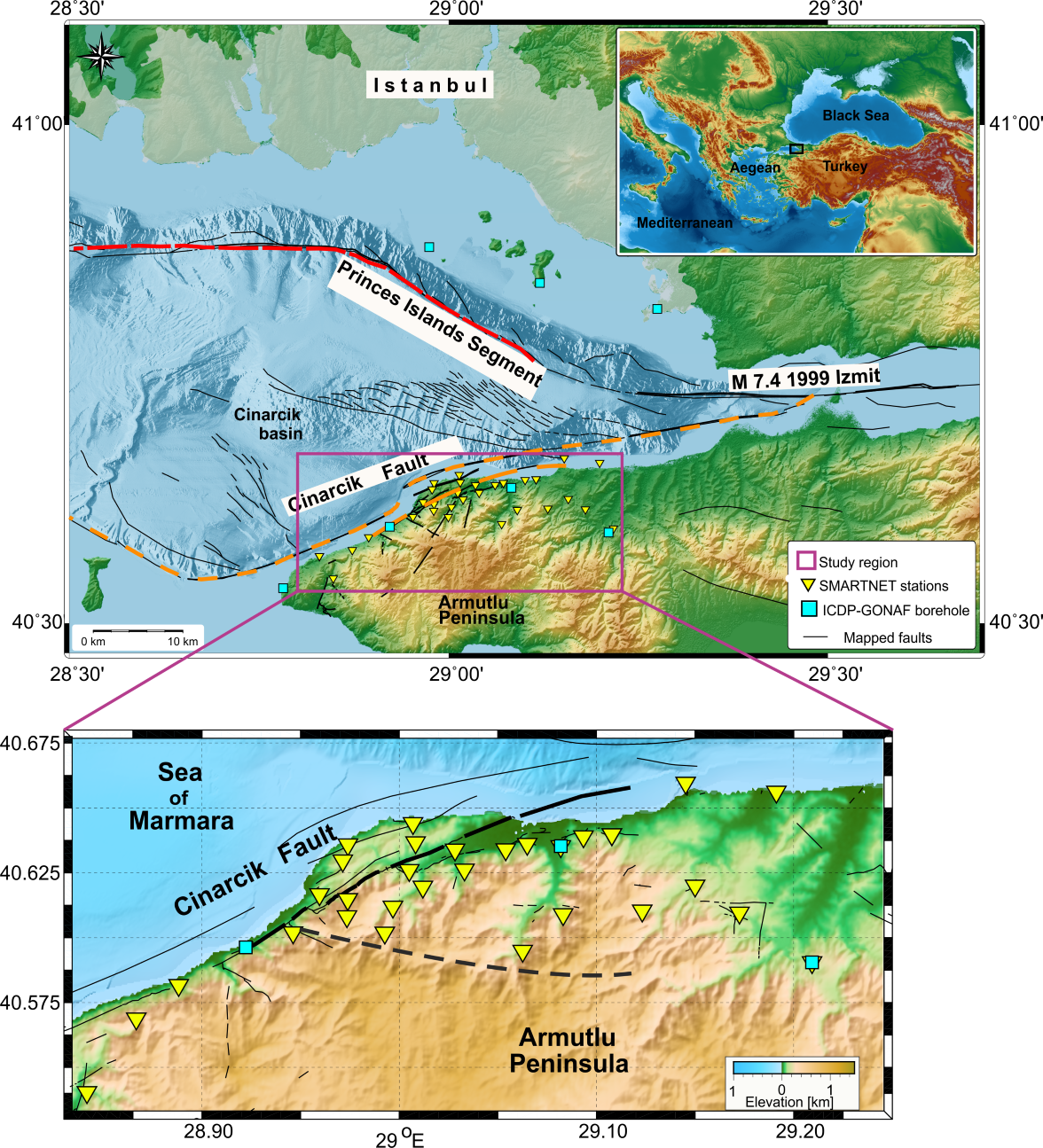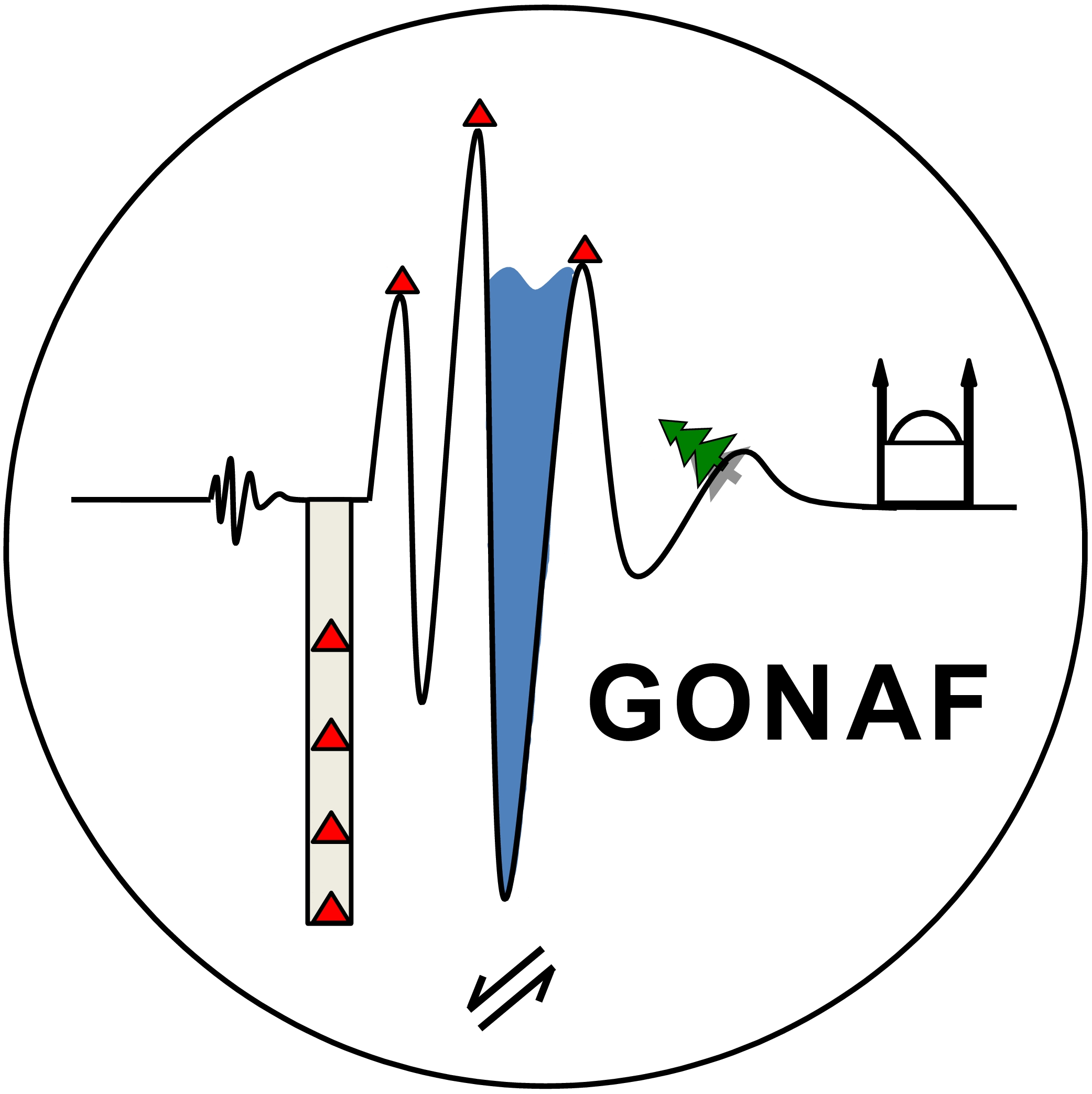SMARTNET
Currently, the NAFZ segment below the Sea of Marmara is late in its seismic cycle, and an M >7 earthquake during the next decades is expected (Parsons, 2004; Bohnhoff et al., 2013; 2016; Murru et al., 2016). The direct proximity to the Istanbul metropolitan region translates the seismic hazard into high-seismic risk, affecting >15 million inhabitants and key infrastructure. In this setting, near-fault monitoring is required to generate high-resolution microseismicity catalogs, resolve mechanisms driving the seismicity, identify locked patches possibly representing nucleation spots of future mainshocks, and to optimize preconditions for earthquake early warning. To that end, the permanent downhole geophysical observatory Geophysical Observatory of the North Anatolian Fault (GONAF) (Bohnhoff et al., 2017) is operating in the eastern Marmara region since 2015, monitoring seismicity at low-magnitude detection threshold, and capturing the entire width of deformation processes using borehole seismometers and strainmeters (e.g., Martínez-Garzón et al., 2019). In 2019 - 2020, near-fault monitoring was further improved along the only onshore portion of the Marmara seismic gap by the installation of a local dense temporary seismic network on the Armutlu Peninsula south of Istanbul (SMARTNET network).
A total of 30 short-period stations and five broadbands were installed in January 2019 to reach a good azimuthal coverage for locating microseismicity and potential creep processes along the onshore portion of the Cinarcik fault. The main objective of this experiment is to characterize the seismic and aseismic deformation of this eventually creeping fault which is in direct vicinity to a recent 2016 M 4.2 earthquake (Malin et al., 2018) and a slow-slip episode recorded in the strainmeter in relation to the M 4.2 event (Martinez-Garzon et al., 2019) and to decrease the magnitude of completeness of microseismicity to be able to monitor earthquake preparation processes.
SMARTNET was composed of five broadband Trillium compact seismometers, 10 Mark 1 Hz seismometers, and 10 HL-6B geophones with natural frequencies of 4.5 Hz. Five additional Mark seismometers were installed from July 2019 onward.
We analyzed microseismicity recordings from the SMARTNET seismic network and borehole strainmeter data from the eastern Marmara region in northwest Turkey to track seismic and aseismic deformation around the hypocentral region of an Mw 4.5 earthquake in 2018.
A slow transient was observed that lasted about 30 days starting at the time of the Mw 4.5 event. We studied about 1200 microseismic events that occurred during 417 days after the Mw 4.5 event around the mainshock fault rupture. The seismicity reveals a strong temporal clustering, including four episodic seismic sequences, each containing more than 30 events per day. These observations suggested that slow slip and potentially fluid diffusion along the fault plane could have controlled the seismicity during the initial 150 days following the Mw 4.5 event. In contrast, stress redistribution and breaking of remaining asperities may have caused the activity after the initial 150 days. Our observation from newly installed combined dense seismic and borehole strainmeter network follows an earlier observation of a slow transient occurring in conjunction with enhanced local seismic moment release in the same region. This suggests a frequent interaction of seismic and aseismic slip in the Istanbul–Marmara seismic gap.

